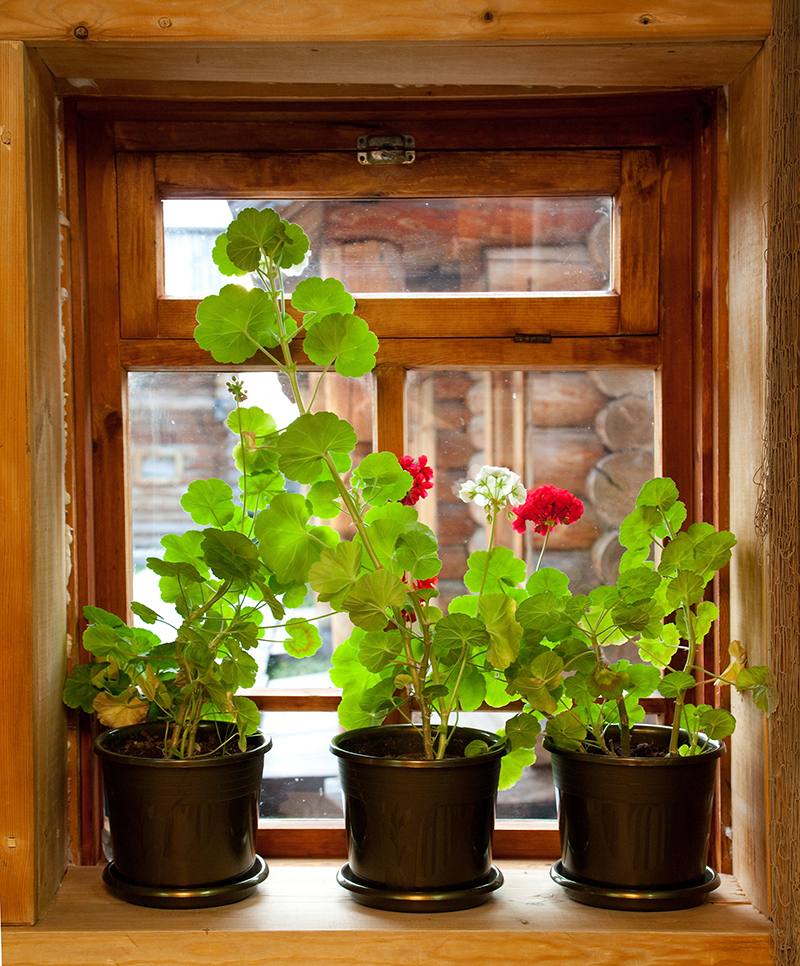Orchid Care: From Novice to Expert
Posted on 13/08/2025
Orchid Care: From Novice to Expert
Orchids are among the most captivating and diverse flowering plants worldwide. Known for their unique beauty and diverse species, these blooms can instantly elevate the ambiance of any space. However, many believe orchids are difficult to nurture--an intimidating misconception for both aspiring and seasoned plant enthusiasts. In this comprehensive guide, we'll cover everything you need to know about orchid care, helping gardeners of all skill levels grow vibrant, healthy orchids from the ground up. Whether you're just starting out or want to refine your skills to become an orchid expert, this article is your pathway to success.
Understanding Orchids: A Brief Overview
Orchids belong to the family Orchidaceae, one of the largest and most varied plant families in the world. With over 25,000 species and more than 100,000 hybrids, orchids display an incredible spectrum of forms, colors, and growing requirements. Some of the most popular *orchid varieties* include:
- Phalaenopsis (Moth Orchids): Great for beginners due to their hardiness and long-lasting blooms.
- Cattleya: Famous for their large, fragrant flowers often used in corsages.
- Dendrobium: Known for their canelike stems and prolific flowering.
- Oncidium (Dancing Lady): Distinct for their intricate patterns and rich colors.
- Paphiopedilum (Lady's Slipper): Recognized by their unique pouch-shaped lip.
Before delving into orchid cultivation tips, let's decipher some basic facts about orchids' unique biology and how this relates to successful care.

The Fundamental Needs of Orchids
1. Light Requirements for Orchids
Proper lighting is crucial for orchid growth and flowering. But not all orchids need the same amount of light. Most orchids, like Phalaenopsis, prefer bright, indirect sunlight. Too much direct sun can scorch their leaves, while too little light can prevent blooming. Here's how to gauge your orchid's light needs:
- Leaf Color: Healthy leaves are light to medium green. Dark green may indicate insufficient light, and yellowish or reddish hues may suggest too much.
- Location: Place orchids near east- or south-facing windows with filtered light. If the sun is too strong, use sheer curtains.
- Artificial Lighting: Use fluorescent grow lights if natural light is unavailable.
2. Watering Orchids Properly
One of the leading causes of orchid problems is improper watering--either overwatering or underwatering. Since most orchids are epiphytes (they grow on trees in the wild), their roots require both moisture and excellent aeration.
- When to Water: Water only when the potting medium (bark, moss, etc.) has dried out. This typically means once per week, but always check soil moisture levels first.
- How to Water: Use lukewarm water, allowing water to run freely through the pot. Avoid letting the plant sit in standing water to prevent root rot.
- Humidity Needs: Orchids flourish in humidity levels between 50%-70%. Use humidifiers, humidity trays, or misting to supplement dry indoor climates.
3. Temperature and Climate Control
Maintaining the right temperature range is essential for orchid health and for encouraging blooms. Most commonly grown orchids (such as Moth Orchids) thrive at:
- Daytime: 65-80?F (18-27?C)
- Nighttime: 60-70?F (15-21?C)
It's important to avoid sudden temperature changes and to protect orchids from cold drafts and direct heat sources.
4. Potting and Repotting Orchids
Choosing the right potting medium is vital. Standard soil can suffocate orchid roots; instead, use specialized orchid mixes containing bark, sphagnum moss, perlite, or coconut husk. Repot orchids every 1-2 years, usually after flowering, to refresh the growing medium and prevent disease.
- Choose the Right Pot: Clear plastic pots help monitor root health and allow light to reach roots (important for some species).
- Signs You Should Repot: Roots growing out of the pot, soggy or decomposed medium, or lack of new growth.
- How to Repot: Gently remove the plant, trim dead roots, and place it in fresh medium.
Daily and Seasonal Orchid Maintenance
1. Fertilizing Orchids
While not demanding, orchids benefit from regular feeding during their active growth periods. Use a balanced orchid fertilizer (such as 20-20-20) diluted to half strength every 2-4 weeks. Avoid over-fertilizing, which can damage delicate roots.
- Growth Phase: Increase fertilization when orchids are actively growing (usually spring and summer).
- Dormancy: Reduce fertilization in fall and winter when growth slows down.
2. Pruning and Deadheading Orchids
After blooms fade, snip flower spikes just above a node to encourage reblooming or cut them at the base to let the plant rest. Remove yellow or dead leaves to keep your orchid healthy.
3. Pest and Disease Management
Common orchid pests include scale, aphids, spider mites, and mealybugs. Inspect your plants regularly and treat infestations promptly using:
- Manual Removal: Wipe leaves with soapy water or a cotton swab dipped in alcohol.
- Neem Oil: An effective organic pest control option.
- Proper Sanitation: Avoid sharing tools between plants and always use clean pots and potting media.
Fungal and bacterial diseases often result from excess moisture. Ensure your orchids are well-ventilated, avoid overwatering, and remove any infected plant parts immediately.
Advanced Orchid Care: Moving Toward Expertise
Once you've mastered the basics, advanced orchid growing opens exciting new possibilities. Experts often experiment with unique species, propagation, and advanced care techniques:
1. Propagation of Orchids
- Keiki Production: Some orchids produce "babies" called keikis. Once roots have formed, keikis can be separated and planted as new orchids.
- Division: Mature orchids with multiple pseudobulbs can be divided into two or more plants during repotting.
- Seed Propagation: Growing from seed is challenging and usually requires sterile laboratory conditions, but it can be pursued by dedicated enthusiasts.
2. Manipulating Bloom Cycles
Many orchids, such as Phalaenopsis, can be encouraged to rebloom by adjusting light and temperature. Providing a drop in nighttime temperatures (about 10?F lower than daytime) for 2-3 weeks can stimulate flower spike production.
3. Growing Specialty Orchids
Explore rare or specialty species such as Masdevallia, Miltonia, or Vanda, each with unique environmental needs. Vanda orchids, for instance, require higher light and air movement, while Masdevallia thrive in cool, moist environments.
4. Mounting Orchids
Advanced growers may experiment with mounting orchids on bark or wood, replicating their natural epiphytic lifestyle. This approach requires frequent misting and a consistently humid environment but can be deeply rewarding.
Troubleshooting Common Orchid Problems
Even meticulous orchid keepers sometimes encounter issues. Here are common problems and *expert solutions*:
- No Blooms: Often due to insufficient light, excessive nitrogen fertilizer, or lack of temperature fluctuation.
- Yellow Leaves: May indicate overwatering, poor drainage, or nutrient imbalances.
- Root Rot: Stems from prolonged wetness; ensure fast-draining medium and let roots dry between waterings.
- Wrinkled Leaves: Caused by underwatering or root damage. Check the roots and adjust watering frequency.
The Rewards of Orchid Care: Benefits and Joys
Caring for orchids is a deeply satisfying hobby, from admiring delicate, long-lasting flowers to learning about global biodiversity. Studies even show that nurturing plants can reduce stress and improve mental health. Plus, sharing rare orchid blooms with friends or fellow enthusiasts can be a source of pride and connection.
Orchid Care FAQs
Q: How often should I water my orchid?
A: The ideal frequency varies with season and environment, but typically once per week. Always check the potting medium's dryness before watering.
Q: How long do orchid blooms last?
A: Depending on the species, blooms can last from several weeks up to three months, especially with Phalaenopsis orchids.
Q: What is the best potting mix for orchids?
A: A mix of orchid bark, sphagnum moss, perlite, or coconut husk ensures aeration and drainage, critical for healthy roots.

Orchid Care Glossary
- Epiphyte: A plant that grows on another plant (such as a tree), not in soil.
- Pseudobulb: A bulb-like storage organ found in many orchid species.
- Keiki: A small plantlet growing from an adult orchid, especially in Dendrobiums and Phalaenopsis.
Conclusion: Mastering Orchid Care, Step-by-Step
Whether you're nurturing your first Phalaenopsis or orchestrating a greenhouse of rare jewels, successful orchid plant care is within your reach. By understanding the unique needs of your orchids and gradually fine-tuning your horticultural skills, you can enjoy exceptional blooms and the satisfaction of mastering one of nature's finest masterpieces. Begin your journey today, and watch your confidence--and your orchids--flourish!
- Start with the basics: Focus on light, water, and temperature.
- Gradually explore new species and advanced care techniques.
- Share your experiences with the orchid community and keep learning!
Happy growing, and may your orchids thrive from novice beginnings to expert achievement!
Latest Posts
Your Path to Beautiful Hydrangeas
Captivating and Enduring: Top 12 Long-Lasting Flowers
Nature's Echo: Identifying Your Personality Flower





